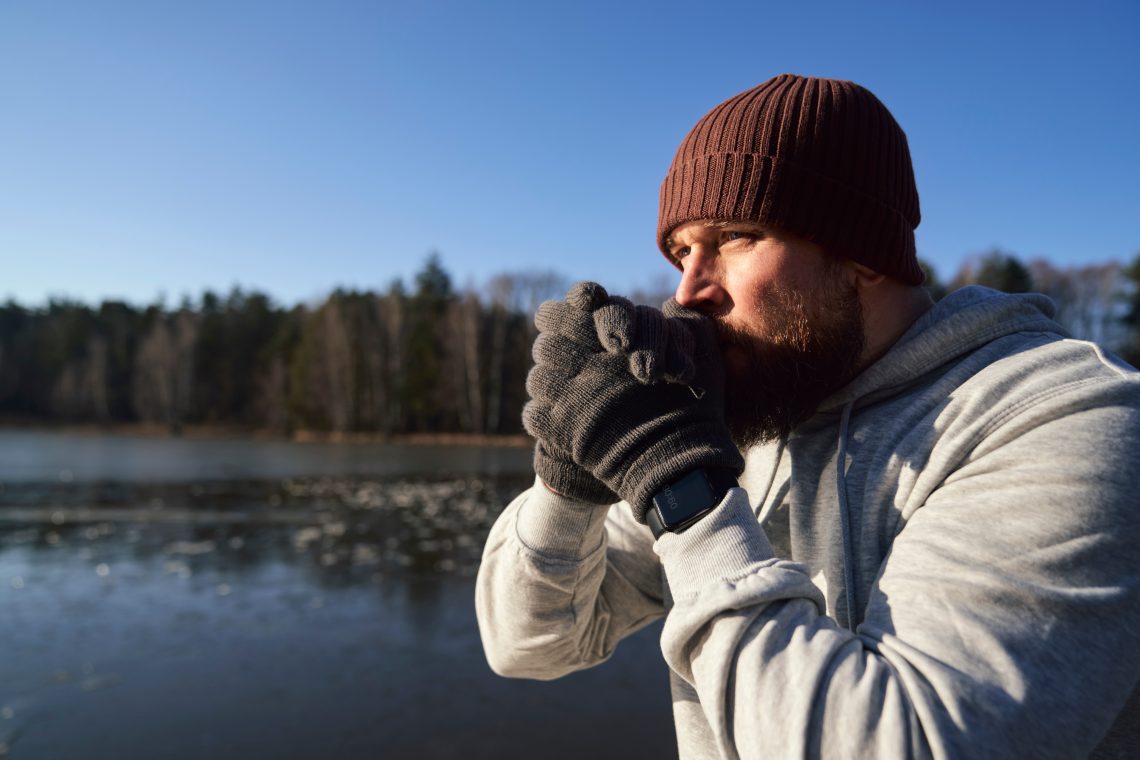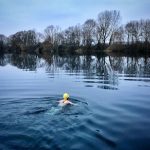
After-drop is real (and how to deal with it)
Simon Griffiths discusses the realities of “after-drop” and how swimmers can manage it.
If you have spent any time hanging around open water swimmers you may have heard the term “after-drop”. If you’ve done any swimming in cool water, you may have experienced it. For the uninitiated, after-drop refers to the decline in your core body temperature after you have got out of the water. This often manifests itself in a bout of shivering that starts shortly after exiting the water, typically after between 5 and 10 minutes.
Why does this happen? One plausible theory, that’s now been disproved, is that it was caused by cold blood from the periphery returning to your core as your circulation got going again.
The current theory is that rather than being a circulation phenomenon, it is instead caused by conduction. When you enter cold water, your body cools from the outside. This ‘cold front’ continues to move towards your core after you exit the water, causing ‘after-drop’. For more on this, see Even Melons Get Afterdrop.
Regardless of the mechanism, the effect is real, as I found out when I took part in a study at the Extreme Environments Laboratory at Portsmouth University. For the experiment, I had to swim in cool water (16 degrees and 18 degrees) for two hours while the researchers monitored (among other things) my deep body temperature. After two hours at 18 degrees, my body temperature had dropped by about half a degree. I towelled off, dressed, put on a coat and hat and drank a hot tea. I was then able to watch my temperature fall to just over 36 degrees before it stabilised and then started climbing back up. The same thing happened at 16 degrees but the effect was greater, the minimum temperature lower and the time taken to stabilise longer. After-drop is real. While you are dressed and warming up, your core may still be cooling.
As the cooling is inevitable, the question becomes, what do we do about it? Here are some suggestions:
- Get dressed quickly and warmly. Immediately after swimming you may feel great but your body has been chilled and its natural defenses against the cold will kick in quickly. It’s best to wrap up warmly before you start shivering. It’s much harder to dress when your hands are shaking.
- If you’ve got very cold, don’t take a hot shower immediately. Cold water swimmers have been known to faint in hot showers. Wait until you’ve warmed up again before showering. If you’re just slightly chilled, a warm shower is fine.
- Don’t attempt to drive or ride a bike until your core temperature has recovered. Driving and shivering is not a good combination. If your core temperature drops too much and you become hypothermic it can also affect your cognitive abilities. Again, not good for driving.
- On the other hand, movement is good as it will warm you from the inside. Fast walking or star jumps may help.
- Drink something warm and eat something. Shivering is a highly energy consumptive bodily function. You need to fuel it. The benefit of the warm drink is mostly psychological, but it still helps. Beware of hot drinks as you can scald yourself.
- Keep an eye on your fellow swimmers. Someone who appears completely fine getting out of the water may be in trouble 10 minutes later and may need your help.
- Get out of the water before you get too cold as you will continue to get colder after swimming – give your body a margin of safety.
For more on this subject see our section on Cold Water Swimming








